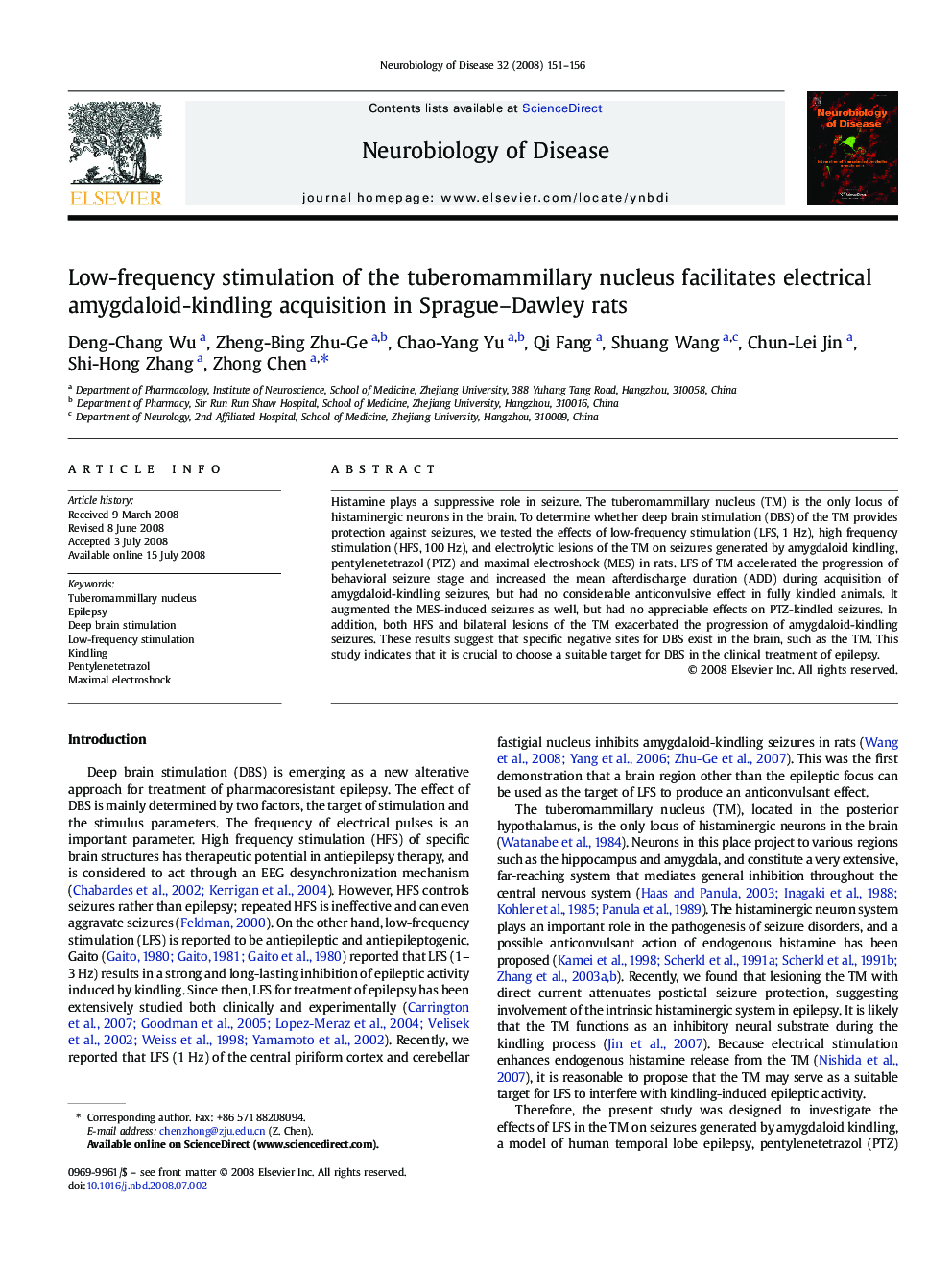| Article ID | Journal | Published Year | Pages | File Type |
|---|---|---|---|---|
| 3070149 | Neurobiology of Disease | 2008 | 6 Pages |
Histamine plays a suppressive role in seizure. The tuberomammillary nucleus (TM) is the only locus of histaminergic neurons in the brain. To determine whether deep brain stimulation (DBS) of the TM provides protection against seizures, we tested the effects of low-frequency stimulation (LFS, 1 Hz), high frequency stimulation (HFS, 100 Hz), and electrolytic lesions of the TM on seizures generated by amygdaloid kindling, pentylenetetrazol (PTZ) and maximal electroshock (MES) in rats. LFS of TM accelerated the progression of behavioral seizure stage and increased the mean afterdischarge duration (ADD) during acquisition of amygdaloid-kindling seizures, but had no considerable anticonvulsive effect in fully kindled animals. It augmented the MES-induced seizures as well, but had no appreciable effects on PTZ-kindled seizures. In addition, both HFS and bilateral lesions of the TM exacerbated the progression of amygdaloid-kindling seizures. These results suggest that specific negative sites for DBS exist in the brain, such as the TM. This study indicates that it is crucial to choose a suitable target for DBS in the clinical treatment of epilepsy.
